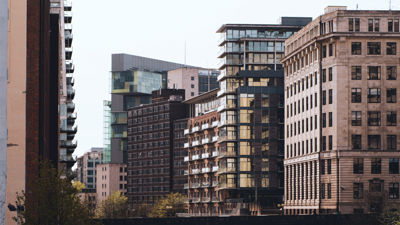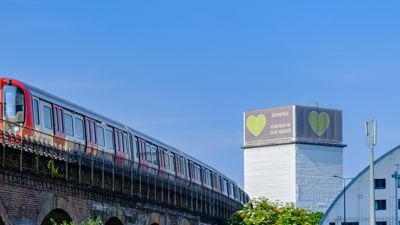Four years ago today, the UK experienced the worst residential fire since the Second World War. In the early hours of 14th June 2017, a fire broke out on the fourth floor of the 24-storey Grenfell Tower in North Kensington, London. Over 250 firefighters battled to put out the blaze, but it would eventually claim 72 lives.
Building Safety Crisis Timeline
The tragedy sparked a national building safety crisis.
- On 18th December 2017, Dame Judith Hackitt, appointed by government to lead a review into building regulations, described the system as “not fit for purpose” in her interim report. In May 2018, the Hackitt Review was published, outlining the government’s combustible materials (such as ACM and HPL cladding) ban on tall buildings.
- On 11th March 2020 the Government announced a £1bn fund for the removal of dangerous cladding of all types from private buildings. In the same month it became clear that many buildings below 18 metres were being denied mortgages unless they could produce an EWS1 form.
- On 18th July 2020 the Government published its draft version of the Building Safety Bill, which signalled a complete overhaul of the buidling safety regime. However, the inclusion of a ‘building safety charge’ suggested leaseholders could be forced to cover the cost of building defects.
- Following the government announced an additional £3.5bn top up to the Building Safety Fund in February 2021. The current cladding remediation fund stands at £5.1bn, but many leading bodies, including ARMA and IRPM, believe this is not enough. Notably, buildings below 18 metres with dangerous cladding won’t benefit from the fund in the same way. Instead, a long-term loan scheme for 4-6 storey flats means leaseholders could still face bills of up to £50 a month for cladding remediation.
Despite progress in funding cladding remediation, there is an absence of government money to solve other areas of the building safety crisis. Internal fire safety issues and rising insurance premiums are just two of many costs which continue to be borne by leaseholders.
Non-Cladding Costs – Building A Picture
In the face of a lack of government research into the true scale of the building safety crisis, ARMA and IRPM have conducted surveys with their members. The findings reveal that the estimated non-cladding costs, such as compartmentation issues and fire breaks, for blocks above 18-metres averages at £14,000 per flat. Another element to consider is the impact of costs up to now. Recurring charges such as Waking Watch costs have depleted reserve funds for many blocks, with the average per flat standing at just £911. The long term effect of this depletion of reserves means that planned works such as lift replacement or re-roofing will have to be funded via calls for cash rather than reserves carefully built up over time.
For blocks below 18 metres, these non-cladding costs average over £5,000 per flat. This cost will be in addition to the £50 a month loan charges for cladding remediation.
As the true scale of compartmentation issues in the current building stock remains unknown, ARMA and IRPM urge the government to carry out a centrally funded intrusive survey of, say, 300 buildings, spread across the public and private stock. This would likely cost around £3m, but will give government and industry clear sight of the scale of the problem, i.e., the frequency and severity of building safety failures.
Government also needs to bring together stakeholders including residents, building owners, building managers, insurers, mortgage lenders and fire risk experts, to have a “grown-up conversation” on which remediation works are necessary and how risk can be managed in a proportionate and sensible way, so that we can understand the scope of work required. Remediation of unsafe buildings should be prioritised according to risk to life.
Only when government and industry understand both the scale and scope of building safety remedial work, can evidence-based decisions and policy making be achieved.
ARMA & IRPM Cladding and Building Safety Campaign Group
ARMA and the IRPM have been fighting to help leaseholders throughout the cladding crisis. The two professional bodies for the residential block management sector lead the Cladding and Building Safety Campaign Group.
The Campaign Group is asking the government:
- To expand the Building Safety Fund to cover the costs of all necessary remediation including compartmentation and fire breaks.
- To expand the scope of the Building Safety Fund to remediate buildings below 18m and ensure the costs of remediation are borne by those directly responsible.
- To introduce a risk matrix that prioritises funding based on the risk to life.
- To establish a Fire Safety Delivery Group chaired by government.
The Human Impact
The human impact of the building safety crisis has been profound, becoming further compounded by the pandemic. Many leaseholders remain trapped in their flats, unable to sell without a valid EWS1 form, as they face huge bills resulting from building safety defects.
A survey carried out by the ARMA and IRPM survey showing the huge stress placed on staff dealing with cladded buildings.
ARMA and IRPM Leaseholder and Media Resources
To aid leaseholders, ARMA and IRPM have today made available several resources to help leaseholders better understand the current cladding crisis and the responsibilities and actions of managing agents. In addition, ARMA is working on a whitepaper that will document the cladding crisis and its solutions from Grenfell to today.
The Future of Building Safety
Four years after Grenfell, ARMA and IRPM continue to campaign for the rights of leaseholders with the aim of protecting them from all building safety costs whilst finding workable solutions for the nation’s safety crisis.
Both bodies continue to lobby government and regularly feature on national television, radio and are quoted in newspapers, helping to draw attention to the lack of adequate funding. Most recently, IRPM and ARMA pledged to support the HCLG Committee’s calls to Government to re-commit to the principle that leaseholders should not have to pay for the removal of unsafe cladding from their homes. It also supported the Committee’s ask that the Government to establish a Comprehensive Building Safety Fund that addresses the true scale of fire safety issues, with finance for the fund provided by government and the building industry.
Despite progress, there remain many unanswered questions around the building crisis. How widespread and costly are non-cladding related fire issues such as compartmentation? Will the funding for buildings below 18m be resolved, so leaseholders do not have to pay? How can we speed up cladding remediation with a shortage of experienced contractors? When will the current supply shortage end? When and how can insurance hikes for cladded buildings be reduced? Many of these questions will remain unanswered for several months, perhaps years, a clear signal that the crisis is far from over. But despite this, progress has been made, some buildings have been remediated and building safety is firmly on the government’s agenda. Solving the building crisis will not be a quick fix, however, it’s clear that the country is committed to ensuring another Grenfell tragedy will never occur again.


